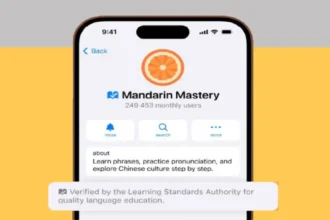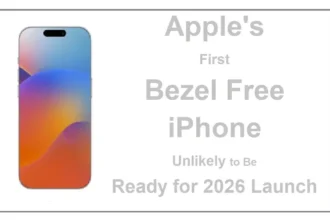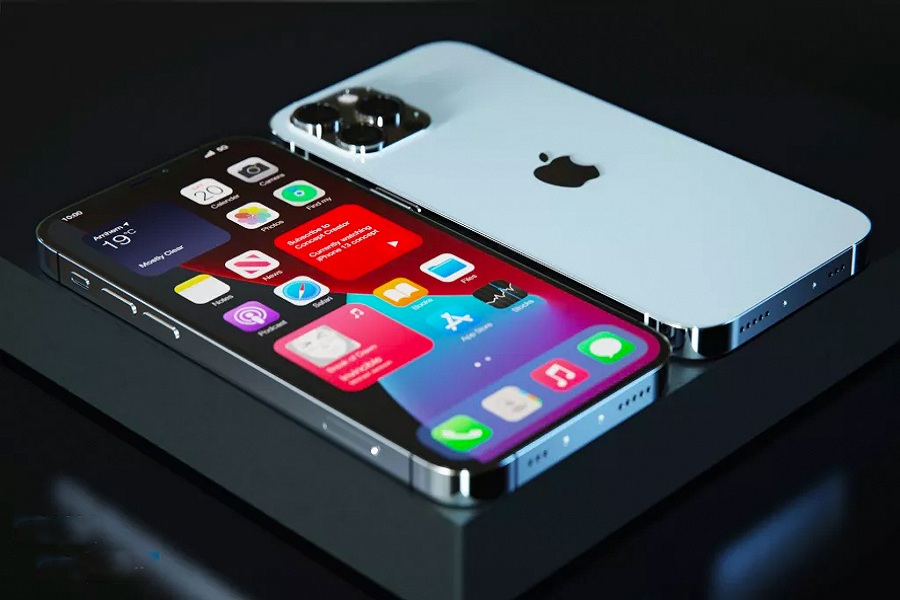The iPhone 13 is getting closer to its moment in the spotlight. Apple has yet to announce a date for the unveiling of the next iPhone, but with September being just a few weeks away, iPhone 13 anticipation is growing. When you add in the regular drumbeat of leaks and rumors that give us a better idea of what the iPhone will look like, it appears that the new phone will be released sooner rather than later.
According to the sources, the iPhone 13 will include a 120Hz LTPO display on both Pro variants, increased battery life thanks to a more efficient 5G modem, and significant camera advancements. A new portrait video mode is there.
• Smaller notch on all four variants
• Faster A15 Bionic CPU
• Improved 5G with the new modem
• Four iPhone 13 models in the same iPhone 12 sizes
• Dynamic 120Hz refresh rates for Pro model screens
• Always-on display
• Improved ultrawide lens on Pro models
• Larger batteries expected on all four iPhone 13 models
• Astrophotography feature and portrait mode video
The greatest iPhones on the market right now
The Biggest Differences to Expect Between iPhone 13 and iPhone 13 Pro
In terms of the iPhone 13’s design, we’ve heard that the notch on all models will eventually diminish. (And, same with the iPhone 12, we’re expecting four variants.) Other reports claim that at least one version of the upcoming iPhone will have a genuinely wireless architecture (but we are not very sure). An always-on display on the iPhone for the first time.
Everything about the new iPhone 13 is relying on all the speculations and leaks that have already surfaced.
The most recent iPhone 13 news (updated August 22)
According to Bloomberg’s Mark Gurman, the iPhone 13 will not include in-display Touch ID, which would be a significant disappointment.
Photos purporting to be of the iPhone 13 Pro appear to show a larger camera module, confirming earlier claims of camera enhancements.
According to a Wedbush note to investors, the iPhone 13 will be released in the third week of September.
When will the iPhone 13 be released?
Despite the iPhone 12’s coronavirus-related delays, which pushed its sale date to October 13, Apple analyst Ming-Chi Kuo says that the iPhone 13 will resume its usual release schedule in 2021. That suggests the game will launch in September. According to Bloomberg’s Mark Gurman, the iPhone 13 may lead a parade of Apple product debuts in the fall, who is well-versed in Apple’s machinations. Another speculation, this time from DigiTimes, suggested that Apple might have multiple events in September.
Apple announced a year ago that the iPhone 12 would not launch in September. On the other hand, Apple did not mention any potential delays while releasing its June quarter profits, implying that the iPhone 13 launch is on schedule. Apple said supply difficulties, but those aren’t what one can expect to impede any launch dates for its new phones.
If Apple’s prior release dates are any indication, the iPhone 13 might enter stores on September 4, 2021. That day is September 24.
In various sources, analyst company Wedbush claims that the iPhone 13 will launch in the third week of September. If that’s a reference to when Apple will host its announcement event, the new phones should be available on September 24.
Apple has struggled to hire staff, and its suppliers have been upping bonuses to entice enough personnel to satisfy demand, so wait times for the iPhone 13 could be longer.
And demand could be high, as one survey of iPhone owners in the United States revealed that 44% desire to buy the iPhone 13.
Furthermore, Foxconn, Apple’s largest manufacturing partner, has issued a market warning regarding supply chain interruptions resulting in iPhone 13 shortages.
Price of iPhone 13
For pricing, we predict the iPhone 13 will be priced similarly to the iPhone 12 — $699, $799, $999, and $1,099, respectively. Apple’s pricing for each new iPhone generation tends to be similar to that of the previous one.
According to TrendForce, the iPhone 13 should be priced “roughly on par” with current iPhone 13 versions. According to the company, the iPhone 13 Pro models will not feature a 1TB storage option.
The new iPhone might come in the exact four sizes as the iPhone 12: a 5.4-inch iPhone 13 small, iPhone 13 of 6.1-inch, a 6.1-inch iPhone 13 Pro, and iPhone 13 Pro Max in 6.7-inch, according to several rumors.
Apple revealed the new iPhones in regulatory filings with the Eurasian Economic Commission; the filing listed seven models, though one could include alternative configurations.
Even though the iPhone 12 small didn’t sell well, sources suggest Apple may release an iPhone 13 tiny (though not everyone thinks it’s a brilliant idea). Assume we’ll see four iPhone 13 versions in the fall, all of which will be part of the iPhone 13 family. A 5G-ready iPhone SE is not in the plan until next year, and a foldable iPhone Flip is not in store for another two years.
The iPhone 13 has a new name.
Since Apple shifted from the iPhone 11 to the iPhone 12 last year, early reports about this fall’s iPhone have used iPhone 13 as the name for the upcoming iteration. The mention of the iPhone 12s is in a few rumors as the latest iPhone.
While we won’t know the exact name until it’s released, one rumor indicates Apple will stay with the iPhone 13 moniker after all. According to the Economic Daily News, the iPhone 13 lineup will be similar to the iPhone 12 in name structure and models, citing sources and supply chain inspections. Apple expected to utilize the iPhone 13 brand for its forthcoming devices, according to Bloomberg’s Gurman.
The “s” model of iPhones meant that the phone was primarily similar to the previous year’s model, with a few significant enhancements. So whether Apple calls this year’s phone the iPhone 12s or iPhone 13, it will reveal a lot about how different it is.
Design of the iPhone 13
Apple Insider got their hands on a set of iPhone 13 fake units, and they reveal some of the most significant design changes. Moving the speaker to the top of the smartphone, a new diagonal camera configuration for the typical iPhone 13, and a larger camera module for the iPhone 13 are all part of this.
The SIM card slot appears to be going down as well, and the power buttons appear to be moving down as well.
Sonny Dickson has already leaked several suspected iPhone 13 dummy units. They only show the rear of Apple’s lineup, but they appear to confirm rumors that the iPhone 13 will sport a diagonal camera setup.
Furthermore, the iPhone 13 Pro Max might be a little bigger than its predecessor.
It is still not sure, but we suppose iPhone 13 Pro cover reveals a much larger camera module.
According to various leaks and reports, after multiple generations of using the same relatively hefty notch, the iPhone 13 is what one thinks to come with a lower display notch.
What we want to see on the iPhone 13
As we come closer to the iPhone 13’s rumored debut date, expect to learn more details about it over the coming month. Beyond what speculations suggest, here’s what we’d like to see from the iPhone 13 when it does arrive.
The cameras on the iPhone 13 will undoubtedly draw a lot of attention.
Apple only included 128GB of base storage in the higher-tier iPhone 12 Pro models, breaking the ice of the regular iPhone 12 and iPhone 12 minor variants. That’s a fantastic start, but Apple needs to catch up and provide a minimum of 128GB of storage in all iPhone 13 variants. Spending over a thousand for a premium smartphone with only 64GB of storage out of the box is borderline disrespectful, especially given Apple’s resistance to microSD expansion.
Improved camera zoom: Apple needs to improve the iPhone’s photographic capabilities while shooting from a distance, whether by hardware, software, or a mix. Smartphone users generally prefer an ultrawide lens, but a strong telephoto lens is just as crucial when you can’t get near to your subject. Perhaps Apple can take a page from Google’s Super Res Zoom function and fills the absence of a highly-powered periscope lens with sophisticated algorithms. The iPhone 12 Pro Max has marginally improved things to 2.5x optical power, but we’d want to see at least 3x in future iPhones with telephoto lenses.
If you’ve never used a phone with a rapid refresh rate display before, you’ll notice that every scroll, tap, task, and game is considerably more responsive than regular 60Hz displays. If 120Hz is too expensive for battery life, we will settle with 90Hz, but a faster refresh rate might make iOS feel even smoother than it already does. Unfortunately, this was another feature announced for iPhone 12 early on but never saw the light of day.
We anticipate that the iPhone 12 Pro, with its flat design, will be a hit.






